Tamburello, Rivazza, Acque Mineralli – Monza might be Italy’s widely held ‘Temple of Speed’, but it’s Imola that truly commands racing drivers’ respect, not least because of Ayrton Senna and Roland Ratzenberger’s fatal accidents there during the ill-fated San Marino Grand Prix weekend in 1994. Nestled against a backdrop of gently rolling hills characteristic of the Emilia-Romagna region, the high-speed circuit has a palpable sense of yore, the kind you feel at Le Mans and Spa-Francorchamps, both awe-inspiring venues that are steeped in motorsport history.
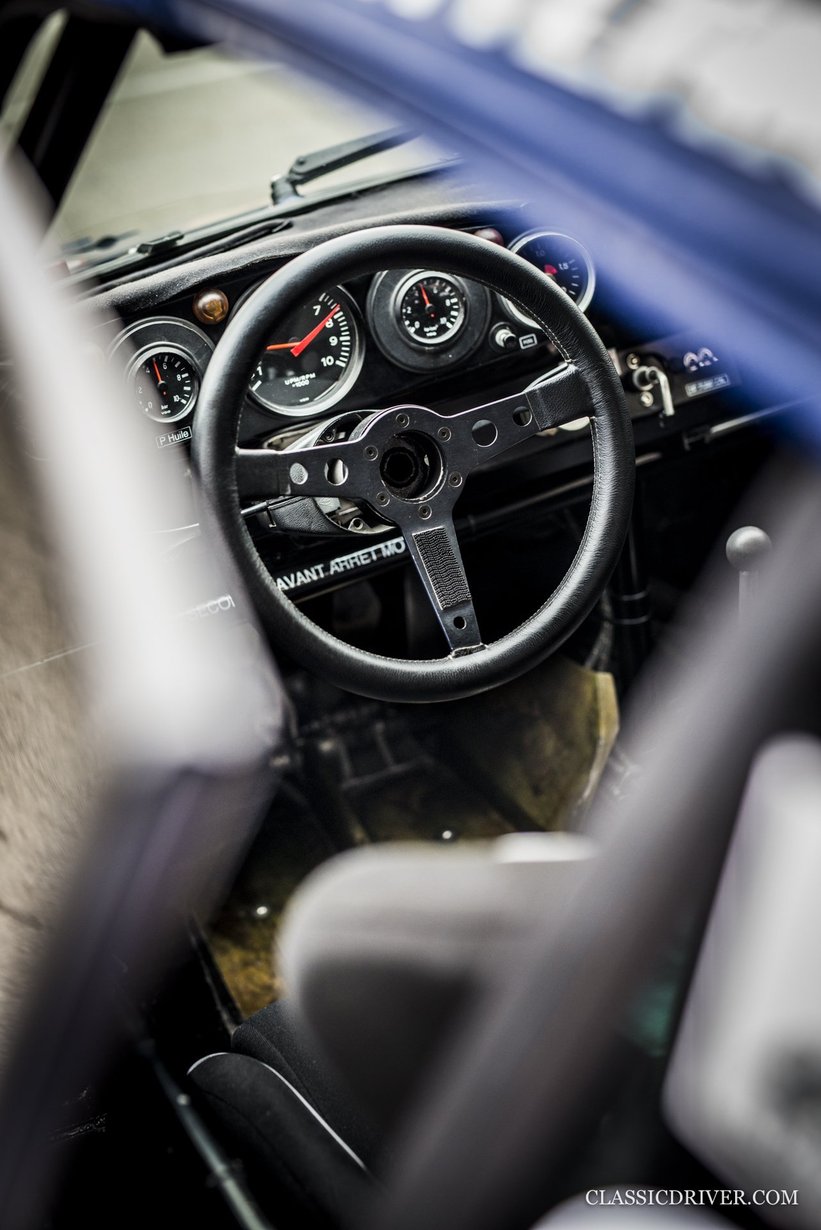
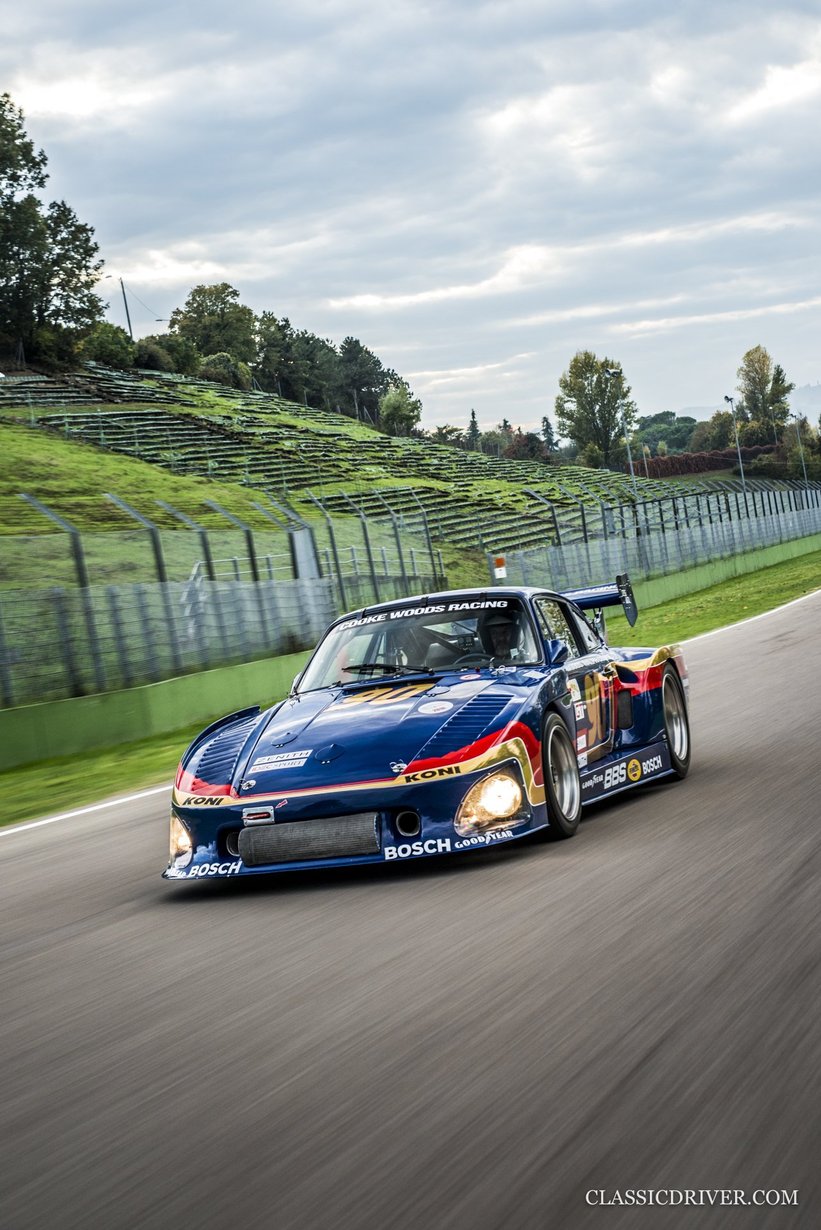
It just so happens that the car we’re shooting on the Autodromo Enzo e Dino Ferrari today requires its pilot to be equally on top of their game: the mighty Porsche 935 Kremer K3. With its ground-hugging aprons, vast rear wing and cartoonish overall proportions, the Porsche 935 is a car that you don’t need to fire up or drive to feel its tremendous power. Is there really a 930 Turbo lurking under there you continually ask yourself. Having dominated Group 5 sports-car racing both in Europe and America from 1976 to 1982, the turbocharged titan’s reputation truly precedes it.
It’s telling of the model’s enduring success that this example, which was delivered as one of the 13 factory customer cars in 1977 and subsequently upgraded by Kremer to full Le Mans-winning K3 specification, enjoyed a period competition career that spanned an entire decade. During that time, it raced under the banner of its original owner George Loos’ Gelo Racing Team, the legendary Lancia-affiliated Jolly Club outfit, Racing Associates and Cooke Woods Racing, the striking blue and gold livery for which the car wears today.
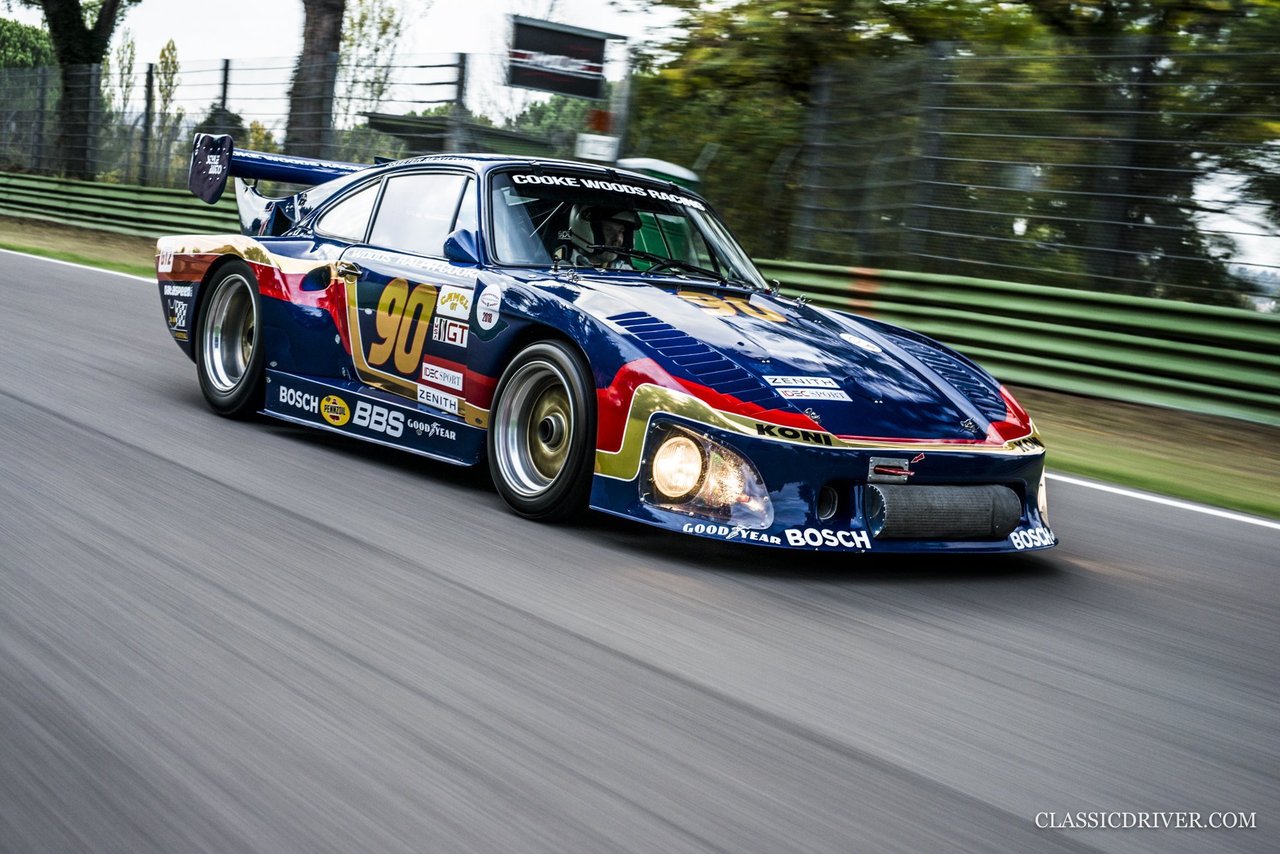
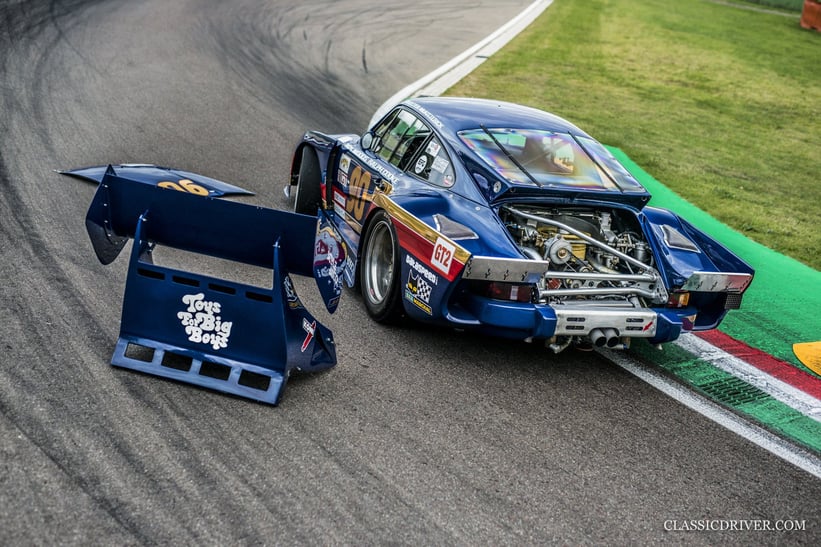
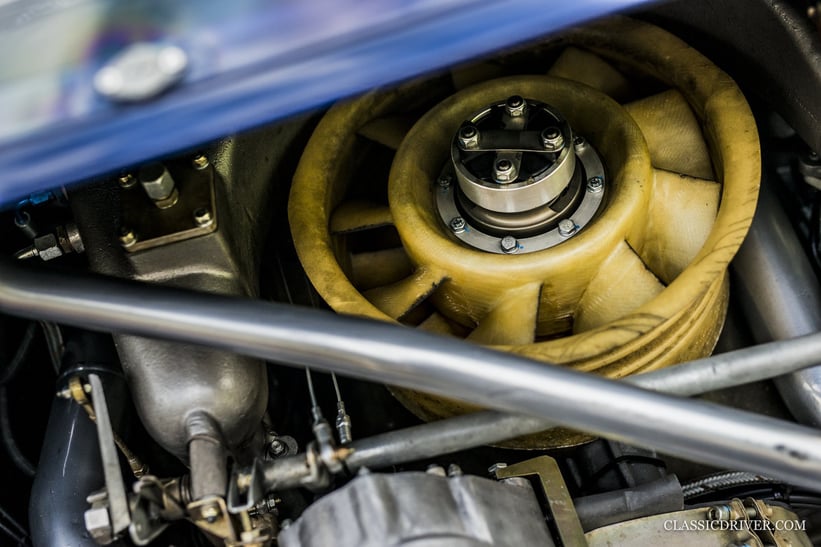
Driven by the likes of Derek Bell, Tim Schenken, Rolf Stommelen, Brian Redman and Hurley Haywood in close to 30 races across three continents, notable results include victories at the Nürburgring 1000Kms and Vallelunga 6 Hours in 1977, second overall at the 12 Hours of Sebring in 1981 and fifth at Le Mans in 1982. In the latter, a suitably French trio of drivers comprising Dany Snobeck, François Servanin and René Metge finished only behind Works Porsche 956 prototypes and John Fitzpatrick’s wildly evolved Porsche 935/78 – an extraordinary achievement for a privateer team running a five-year-old car.
To say this car, which is prepared by Équipe Europe, has served valiantly in the line of duty would be a severe understatement. Not that you’d be able to tell from its beautifully restored bodywork, mind, resplendent in that enchanting shade of near-metallic blue and decorated with the kind of go-faster stripes that could have only come from the 1980s. Inside the sparse and strictly business cabin is where this 935 shows its age, but by no means in a bad way. Over the decades, it’s amassed a patina that only a racing car that’s seen so much action could – it drips with charm, charm that smells like oily metal, fuel and the sweat of every driver who was fortunate enough to wrestle this thing round a track.

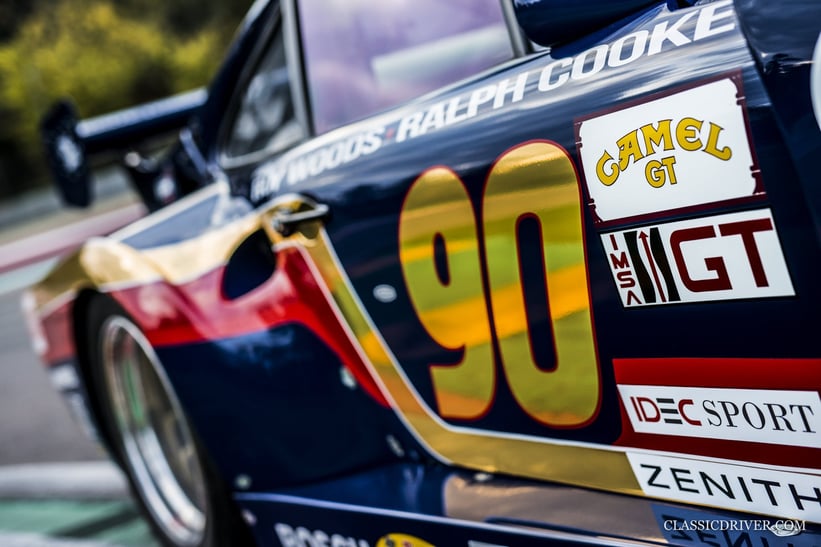
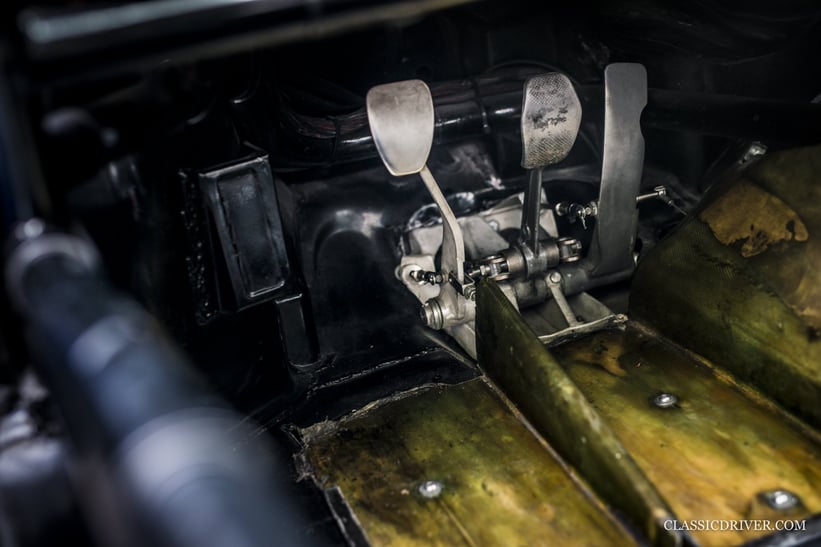
When the car fires, it doesn’t so much rumble at idle but splutter aggressively, the sharp chatter of the cold flat-six biting away at the air. Despite the limited speeds at which we were trundling around Imola to get the tracking shots in the bag, to see the car moving around, clipping apexes and surging forwards beside us, was really spectacular and gave an immersive perspective that you certainly don’t get from the grandstands. For want of another word, it’s simply a beast!
And from behind the wheel? Well, we’ll let the car’s owner, an extremely experienced racing driver both in historic and contemporary motorsport, tell you what that feels like (for reasons of discretion, we’ve kept his identity concealed). “All Porsches come with their own specific instruction manual, but the trickiest car I’ve had the privilege of owning and racing was the Sebring-winning Budweiser-sponsored 935/77. There was no differential strong enough to handle the power at the time, so the car has 750HP, a single turbocharger and a straight rear axle, a combination that makes for a very interesting driving experience. The lag is so long that you have to accelerate at or even before turn-in and wait for the turbos to kick in hoping you’ve not been too hasty. It’s hugely satisfying when you get it right and nothing short of terrifying otherwise.
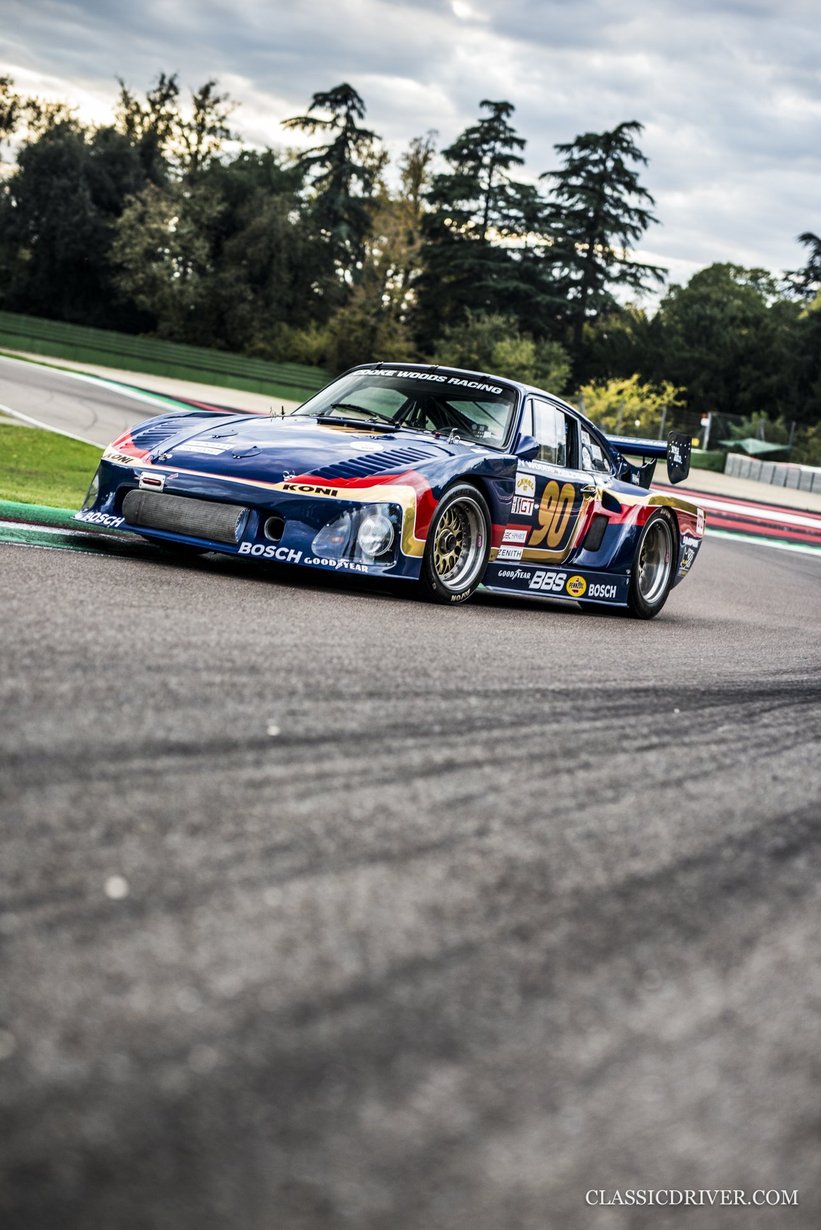
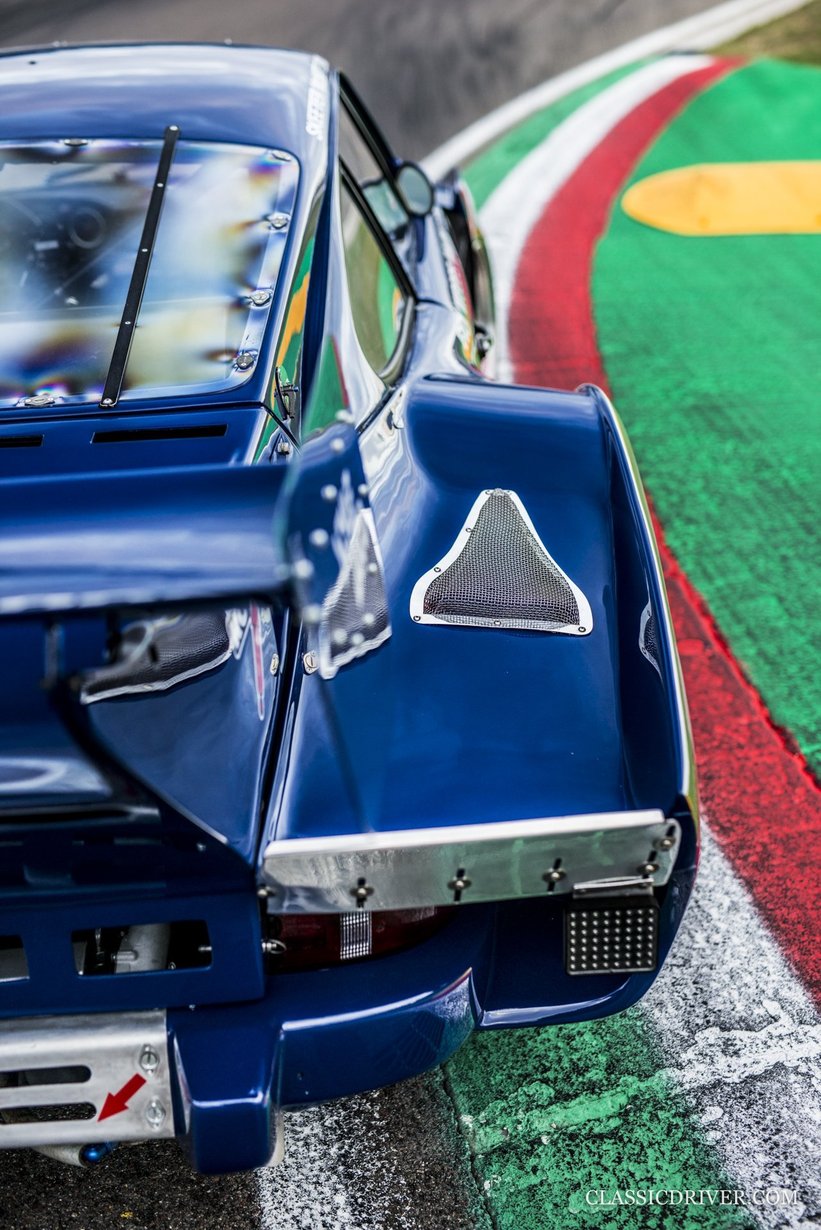
“After winning the French CER championship in 2012, I decided the graduate to the ultimate Porsche 911: the Kremer K3. From the outside the car is very intimidating but it’s actually surprisingly driveable – the addition of a second turbocharger turns the lag into a simple question of anticipation rather than petrified suspense and it’s stable at any speed. It feels like a train – the turbos are still pushing even when you reach the chicane on the Mulsanne Straight at Le Mans at 310kph. While it’s not a tricky car to drive, with the relentless push of 830HP, it is one that must be respected. It’s obviously very physical but it’s insatiably pleasurable. With every fast corner exit, the steering wheel becomes light as the car lifts for a moment of joy and terror, a sensation I’ve found to be unique to the K3.
“I’ve raced at every Le Mans Classic since it started in all kinds of cars ranging from a Lotus Elan to a Lola T70. I’ve also been lucky enough to drive in the ‘big one’ three times in both the GTE and LMP2 categories. But absolutely nothing compares with the exhilaration of shooting down Les Hunaudières in a 935 with the turbos screaming, all the while in the comforting knowledge that the Porsche brakes will be there at the end to slow you down. One more thing: the huge flames that belch from the tail under braking are super helpful in that they light up the corners at night – German engineers really do think of everything!”
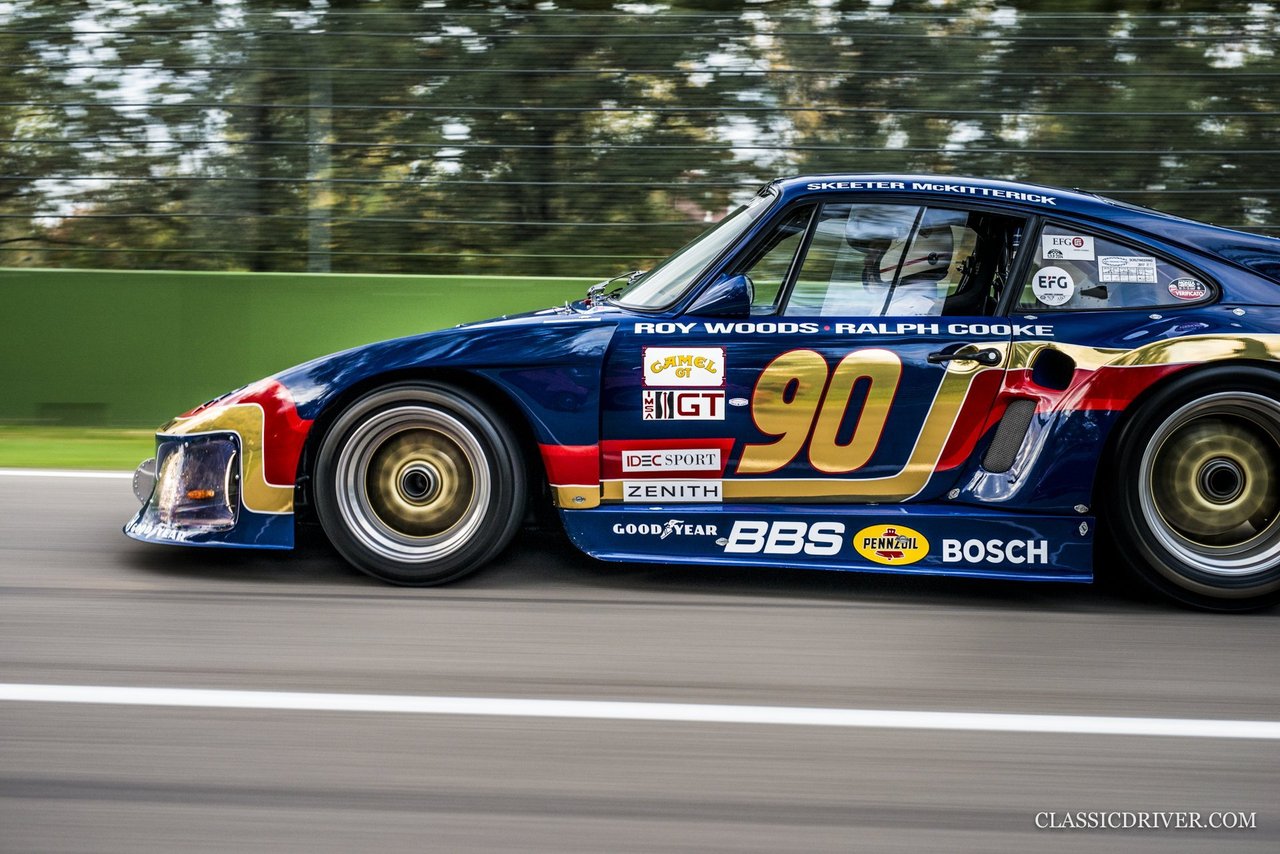
From the boot of our decidedly slow rental tracking car, we can’t decide if the sound of the whooshing turbos is more thrilling than the hoarse bark of the engine – the whole experience is so addictive. Some people dislike it, but we think it’s part of the delirium that surrounds the 935 and the era in which it raced: a time when motorsport went on a frankly hilarious power trip. Goodnight Imola, you’ve truly been an exceptional host.
Photos: Rémi Dargegen © 2019

























